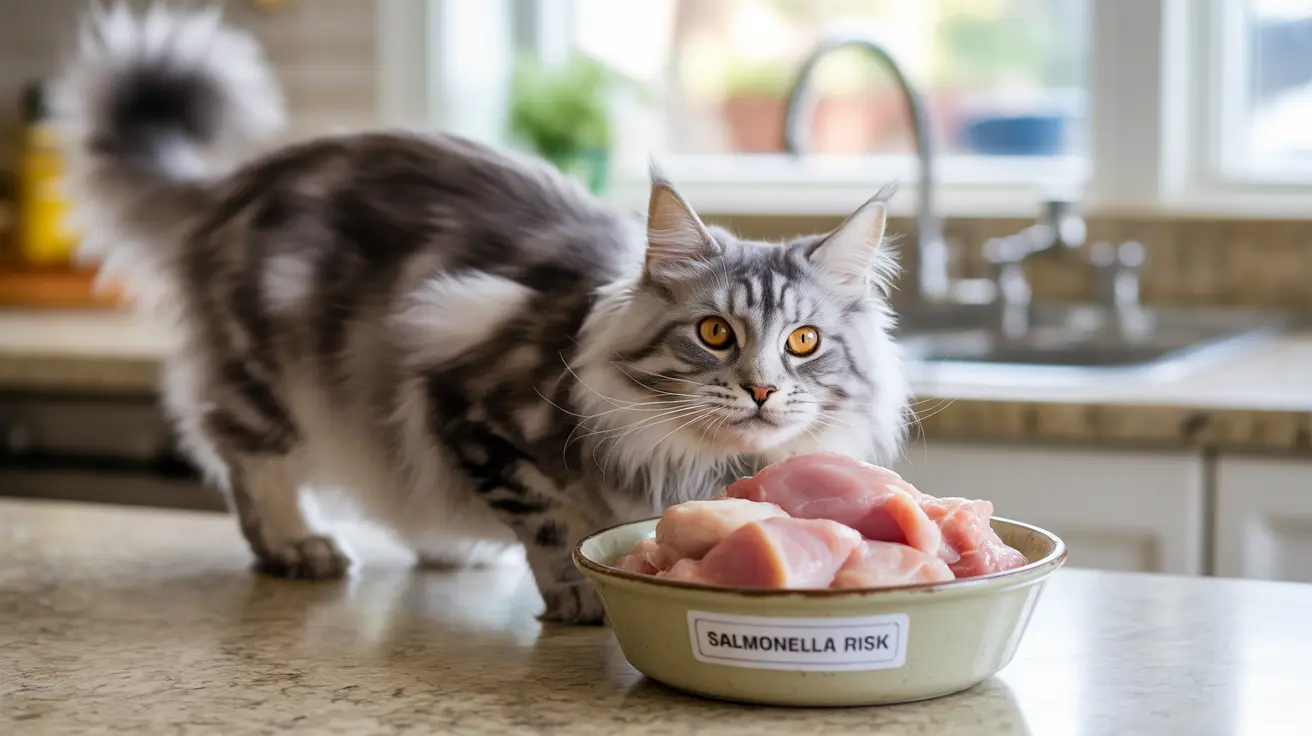Understanding Salmonella Infections in Cats
Salmonella in cats, also known as salmonellosis, is a bacterial infection that can range from mild to severe, affecting your feline companion's digestive system and potentially other organs. While many cats can carry and shed Salmonella bacteria without showing symptoms, others may develop serious illness, particularly if they're young, elderly, or have compromised immune systems.
As a pet owner, understanding this condition is crucial for protecting both your cat's health and your family's wellbeing, as Salmonella can be transmitted between animals and humans. Let's explore everything you need to know about this important feline health issue.
How Cats Contract Salmonella
Cats typically become infected with Salmonella through several common routes. The most frequent source is consuming contaminated food, particularly raw or undercooked meat. This is why veterinarians often caution against feeding raw diets to cats without proper food safety measures.
Other sources of infection include:
- Hunting and eating infected prey animals
- Drinking contaminated water
- Contact with infected animals' feces
- Exposure to contaminated environments
Recognizing the Signs of Salmonella Infection
The symptoms of salmonellosis can vary significantly, from mild to severe. Common signs include:
- Diarrhea (which may contain blood or mucus)
- Vomiting
- Lethargy
- Loss of appetite
- Fever
- Abdominal pain
- Dehydration
In severe cases, cats may develop more serious symptoms such as:
- Severe dehydration
- Shock
- Rapid breathing
- Enlarged lymph nodes
- Skin lesions
Diagnosis and Treatment Approaches
Veterinarians diagnose Salmonella through a combination of physical examination, patient history, and laboratory testing. The primary diagnostic tool is fecal culture or PCR testing to identify the presence of Salmonella bacteria.
Treatment typically focuses on supportive care, including:
- Fluid therapy to prevent dehydration
- Anti-nausea medications
- Nutritional support
- Temperature monitoring
- Pain management when needed
While antibiotics aren't usually prescribed for mild cases, they may be necessary for severe infections or in immunocompromised cats. This careful approach helps prevent antibiotic resistance and prolonged bacterial shedding.
Prevention and Home Care
Preventing Salmonella infection in cats requires a multi-faceted approach:
- Feed commercial, cooked diets instead of raw food
- Keep cats indoors to limit exposure to infected wildlife
- Maintain clean feeding areas and water bowls
- Practice regular handwashing after handling cats
- Clean and disinfect litter boxes daily
- Store pet food properly to prevent contamination
Frequently Asked Questions
What are the common signs of salmonella infection in cats and when should I see a vet?
Signs include diarrhea, vomiting, fever, lethargy, and decreased appetite. See a vet immediately if your cat shows severe symptoms, has bloody diarrhea, or becomes seriously lethargic.
How do cats usually get infected with Salmonella bacteria?
Cats typically contract Salmonella through eating contaminated raw meat, hunting infected prey, or exposure to contaminated feces or environments.
Can salmonella in cats be treated without antibiotics, and when are antibiotics necessary?
Most mild cases can be treated with supportive care alone. Antibiotics are reserved for severe cases, systemic infections, or immunocompromised cats to prevent antibiotic resistance.
How can I prevent my cat from getting salmonellosis, especially if I feed a raw diet?
Feed commercially prepared, cooked diets, maintain strict food hygiene, and keep cats indoors. If feeding raw, use proper food safety protocols and consult with your veterinarian.
Is salmonella contagious between cats and humans, and what biosecurity steps should I take at home?
Yes, Salmonella is zoonotic and can spread between cats and humans. Practice good hand hygiene, clean litter boxes regularly, disinfect contaminated surfaces, and isolate infected cats during treatment.






